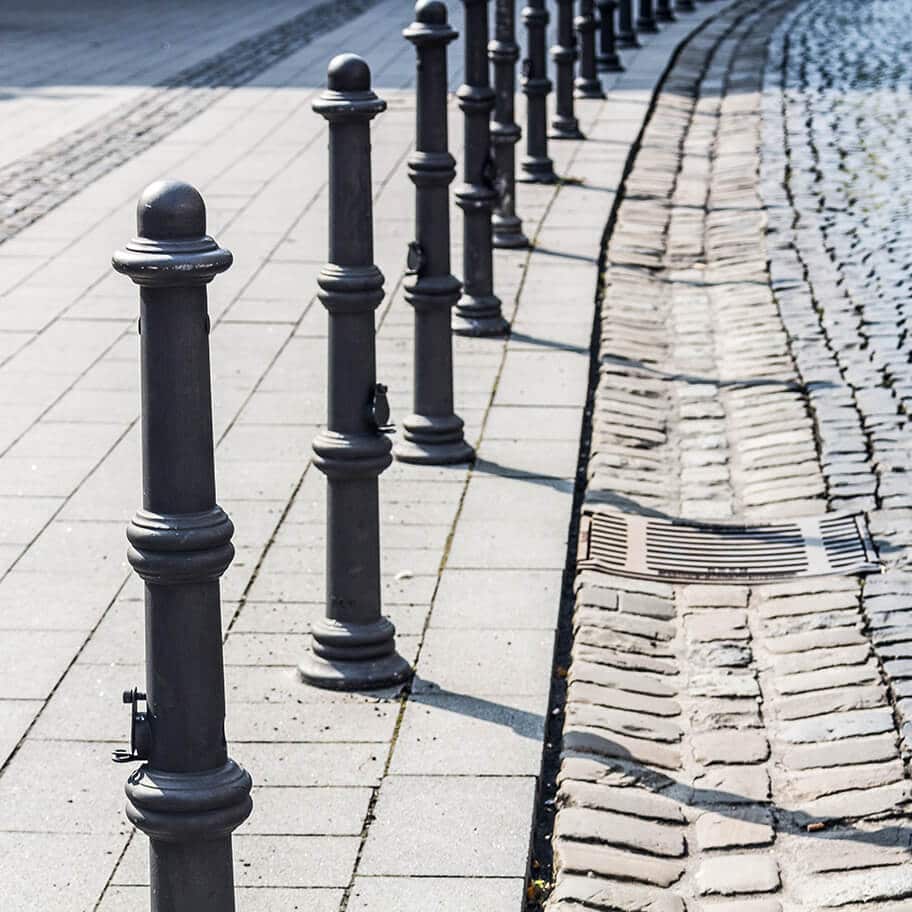What are Bollards Used For?
Bollards are usually in place to control traffic from entering a particular area. There are a number of road accidents which can be caused by this which can lead to long-term injuries. Bollards generally block vehicles from entering private or council property so it is the occupier of the land in which they are placed who is responsible for the maintenance and upkeep of these bollards.
Occupiers’ Liability
The Occupiers’ Liability Act 1995 states that an occupier of premises owes a duty of care towards a visitor. They should show a reasonable duty of care to ensure that they maintain the premises so that health and safety is the number one priority. They should put the necessary precautions in place to make sure that nobody sustains an injury on their property. All occupiers are required to carry out regular maintenance within the boundaries of their property so as to reduce the chances of an accident occurring and to ensure that the site is safe and free from defects. This is known as occupiers’ liability. If an occupier has acted in a negligent manner which has led to the cause of injury then a claim may be made against them.
All landowners are expected to be aware of any potential hazards and dangers. There should also be necessary precautions in place on how to act on any issues that arise. When making a claim it is important that you determine who is liable for the cause of the accident. If an occupier has failed to maintain a safe environment as a result of negligence then it is likely that they will be found liable. If it is found that another person or even the injured led to the cause of the accident that they may be found responsible. It is important to note that if it is found that the injured person contributed to the cause of the accident, through contributory negligence, then they may not be eligible to make a claim.
Common Injuries
Some of the common injuries sustained from a defective bollards accident include:
Causes
Common causes of defective bollards accidents include:
- Vehicles crashing into bollards
- Poorly maintained bollards
- Broken bollards
- Breach in duty of care
What to do after a road traffic accident?
Following a road traffic accident, whether as a driver, passenger, pedestrian or cyclist, there are a number of steps you should follow:
-
Seek medical attention
Your health is your wealth and should be your first priority. Immediately after a road traffic accident, take a second to assess yourself to determine if you have any injuries. Then check if any passengers or anybody else involved in the accident need medical attention. If you or anyone else involved has sustained a serious injury ensure that you contact an ambulance to attend the scene.
For minor injuries, you must remember that minor injuries where you ‘feel fine’ could progress to a more serious injury in the future. In this case it is always better to be safe than sorry and advisable that you go to your nearest accident and emergency (A&E) or local GP to be checked out.
-
Gather all relevant information at the scene
It is important that you gather all the relevant information in connection with your accident:
- Details of another driver(s)/people involved: name, address, contact information, vehicle registration number and vehicle insurance information. You can also offer your own information to the others involved in the accident.
- Name and contact details of any emergency service workers at the scene – paramedic/Gardaí.
- Take a picture of the scene and damage to all vehicles involved from different angles; this will help your solicitor understand how the accident happened.
- If there are any CCTV recordings of the accident, such as CCTV cameras in a nearby shop, for example, you should try to obtain this footage.
- Dash Cam footage – if you have any.
- Record the time and date of the accident.
- Weather conditions at the time.
- Receipt for repairs of damage to your vehicle.
- If possible, try to collect the contact details of anybody that witnessed the accident. This may be of use if you do decide to pursue a road traffic accident claim.
-
Report the incident to the Gardaí
Regardless of how minor or serious the road traffic accident was, it is important that you call the Gardaí to report the accident immediately.
For minor accidents, the Gardaí may tell you that they will not be attending the scene. In this scenario, the appropriate information should be exchanged. In these cases, it is also important that you visit your nearest Garda station to request that they take details of the accident and to take your statement about the accident.
For more serious road traffic accidents, where an ambulance has been called, the Gardaí may arrive at the scene to assess, take statements from the people involved and any witnesses.
-
Contact your insurance company
If you are the driver of the vehicle involved in a road traffic accident it is important to inform your own insurance company so they have a record of the accident.
-
Speak to a road traffic accident solicitor
If you are considering moving forward with a road traffic accident claim for any personal injuries sustained it is advisable that you speak with a road traffic accident claims solicitor as soon as possible. If you are proceeding with a claim, the first step will be submitting your claim to the Injuries Board for assessment. A road traffic accident solicitor can help you in preparing your application to the Injuries Board and ensure that you follow the process in the correct format, meaning that you can move forward with your claim quickly without unnecessary delays.
It is important to remember to keep copies of any expenses that you have incurred as a result of the accident. It is also imperative to retain copies of medical reports or Garda reports, where possible as you will need them when making a claim.

